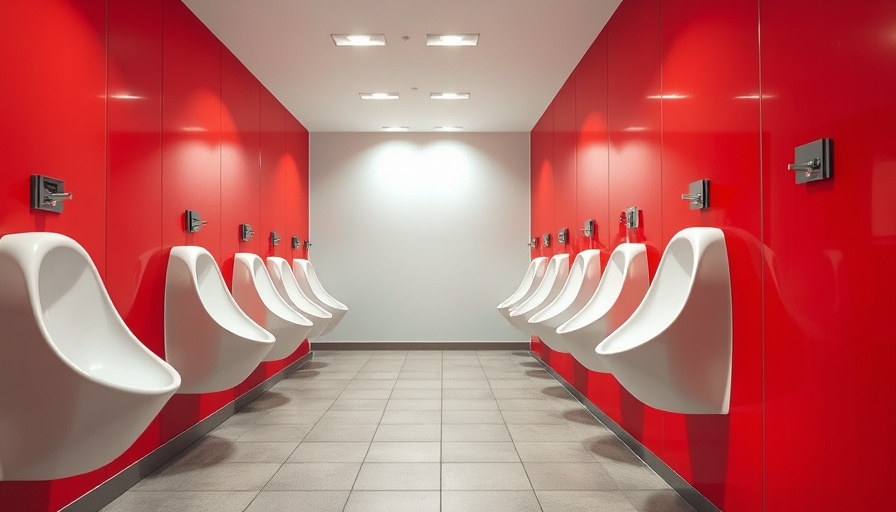
Unlocking Urban Sustainability: The Rise of Waterless Urinals
In the face of escalating water scarcity and sustainability challenges, facility managers are increasingly looking for solutions that align with both environmental mandates and cost-saving initiatives. Among these solutions, waterless urinals have emerged as a powerful yet underutilized technology, promising to save significant amounts of water without compromising hygiene. This article delves into three compelling benefits of waterless urinals, demonstrating how they not only facilitate sustainable practices but also improve facility maintenance.
Sustainability Goals: Saving Water, Saving the Planet
Imagine saving up to 45,000 gallons of water a year by simply replacing traditional flushing urinals with waterless alternatives. According to Klaus Reichardt, CEO of Waterless Co., a standard urinal that sees an average of three uses daily can consume 2 to 2.3 gallons per flush. In contrast, waterless urinals operate efficiently without any water, dramatically cutting down on water consumption.
This is especially important in institutional and commercial settings where water costs can quickly spiral out of control. For instance, a facility in a region where water costs about $44 per 1,000 gallons could find substantial savings by implementing waterless systems. When paired with a well-maintained cartridge system designed to eliminate odor, the stigma often associated with waterless urinals can be effectively addressed, leading to broader acceptance.
Maintenance Savings: Less Labor, More Efficiency
While waterless urinals are not entirely maintenance-free, they do offer significant advantages over traditional urinals. Conventional flushing urinals require regular repairs on flush valves due to wear and vandalism. Waterless options, on the other hand, eliminate this issue and generate less downtime.
Installation and maintenance costs are also reduced. Dan Danowski from Zurn Finish Plumbing notes that the unique characteristic of waterless systems means that while they do require cartridge changes, these are generally simple and infrequent compared to the complexities and labor associated with traditional systems. Moreover, a well-managed waterless urinal can actually improve the bottom line for facility managers by allowing maintenance staff to focus on other pressing sanitation issues.
Environmental Impact: A Step Towards Sustainability
Waterless urinals contribute to a broader narrative of environmental responsibility. With the urgency of climate change more apparent than ever, facility managers play a crucial role in adopting technologies that promote sustainable practices. Waterless urinals exemplify this shift, offering a practical solution that significantly reduces water waste while enhancing overall functionality.
In places like schools and corporate offices, adopting such green technologies can positively influence the organization’s image, showcasing a commitment to eco-friendly practices that can resonate with students, employees, and the community alike. Facility managers can proudly lead their organizations toward sustainability while simultaneously improving operational efficiency.
Debunking Myths: The Truth About Odors and Maintenance
A persistent myth surrounding waterless urinals is that they are associated with unpleasant odors. A study compiled from various reliable sources indicates that when managed correctly, waterless urinals can operate odor-free. Regular maintenance, including cartridge changes designed to trap and neutralize smells, is essential for achieving optimal hygiene.
By educating users and decision-makers about the realities of waterless technology, facility managers can overcome psychological barriers and foster acceptance within their organizations. Indeed, awareness is the key to unlock the potential of this technology.
Future Trends: A Water-Saving Revolution
The discussion surrounding waterless urinals is timely and aligned with current environmental trends. As cities worldwide prioritize sustainable solutions, the push for water-efficient designs will only intensify. Incorporating innovative technologies such as hybrid urinals or advanced filtration systems can further enhance user experience while reaffirming a commitment to sustainability.
In conclusion, waterless urinals not only promise significant savings in water and maintenance expenses, but they also represent a forward-thinking approach towards sustainable design in public facilities. The potential impact is immense, making a strong case for the broader adoption of these technologies in our quest for environmental preservation.
To explore opportunities for implementing waterless solutions in your facilities, reach out to local suppliers and experts in sustainable designs. Be part of the change and contribute to a more water-conscious world.
 Add Row
Add Row  Add
Add 






Write A Comment